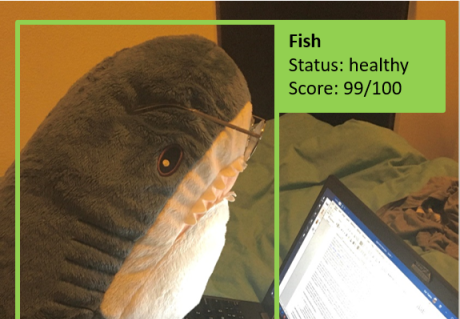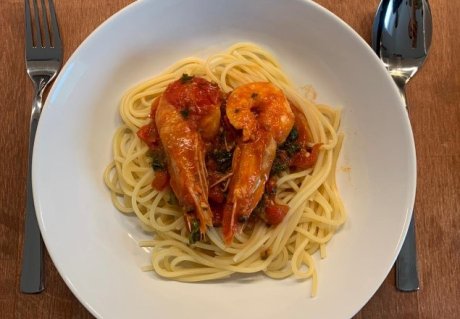
‘Stocked shrimp in tomato sauce’
WIAS magazine - Fall edition 2021
Student lifestyle
Cooking
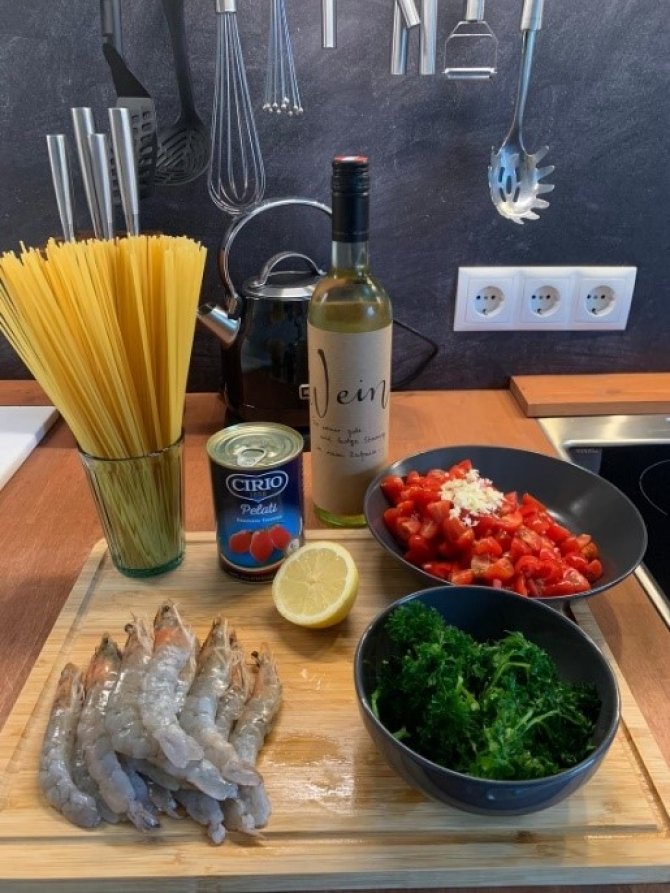
When the WIAS magazine asked me to write a piece for the student lifestyle section, I thought it might be a good possibility to share a great shrimp recipe. It will take you about 25 minutes and as ingredients (~4 persons) you only need:
- Fresh shrimp with head - 800 g
- Garlic - 2 toes
- Cherry tomatoes - 250 g
- Smashed tomatoes - 1 can
- White wine
- Lime or lemon - ¼ to ½
- Parsley - 40 g
- Sugar - 2 tsp
- Salt and pepper
Noodles - 750 g
Step 1
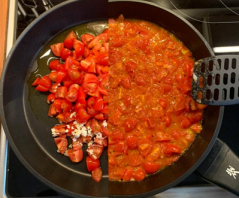
Add quartered cherry tomatoes and the small-pieced garlic into the pan with olive oil and fry it until the cherry tomatoes are melted. This gives you quite a good basic sauce which you can use for a lot of other dishes as well.
Step 2
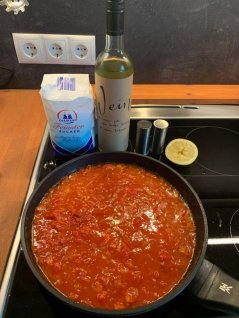
You can now add the can of smashed tomatoes, the white wine and the ¼ to ½ lime/lemon. In my opinion, it is always nice to add some sweetness to tomato-based sauces (especially in combination with the lime/lemon), to get a nice acid-sweet interaction. Therefore, add 2 tsp (small spoon) sugar and round it up with salt and pepper.
Step 3

Now, the time is there to stock the shrimp (prior to stocking: peel them and remove the gut, however, do not remove the head as it adds a lot of flavour). Release them into the sauce and let them swim for 10-15 minutes (in the meantime you can cook the noodles). To finish your dish, add the parsley to the pan.
Enjoy your meal!


